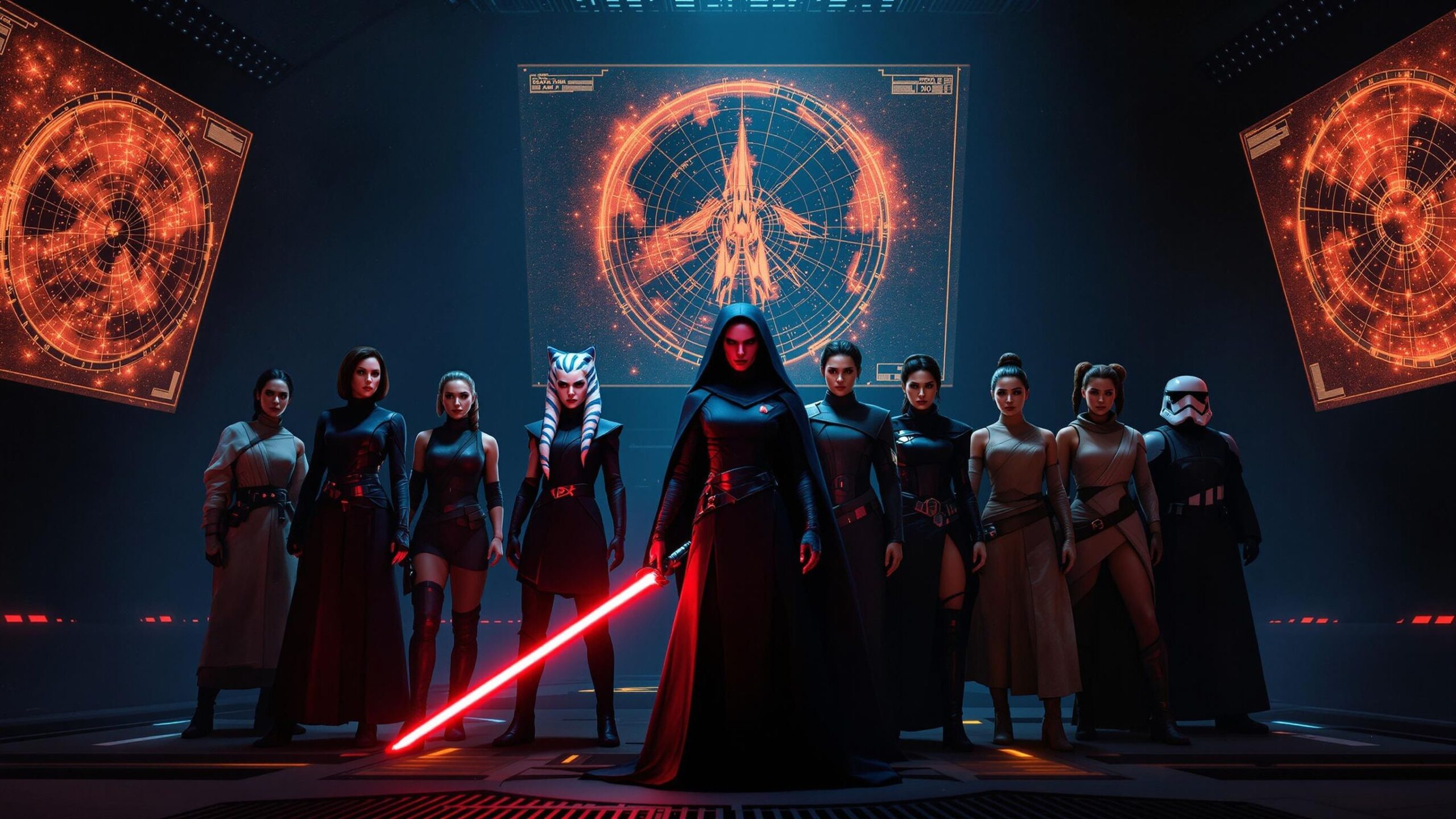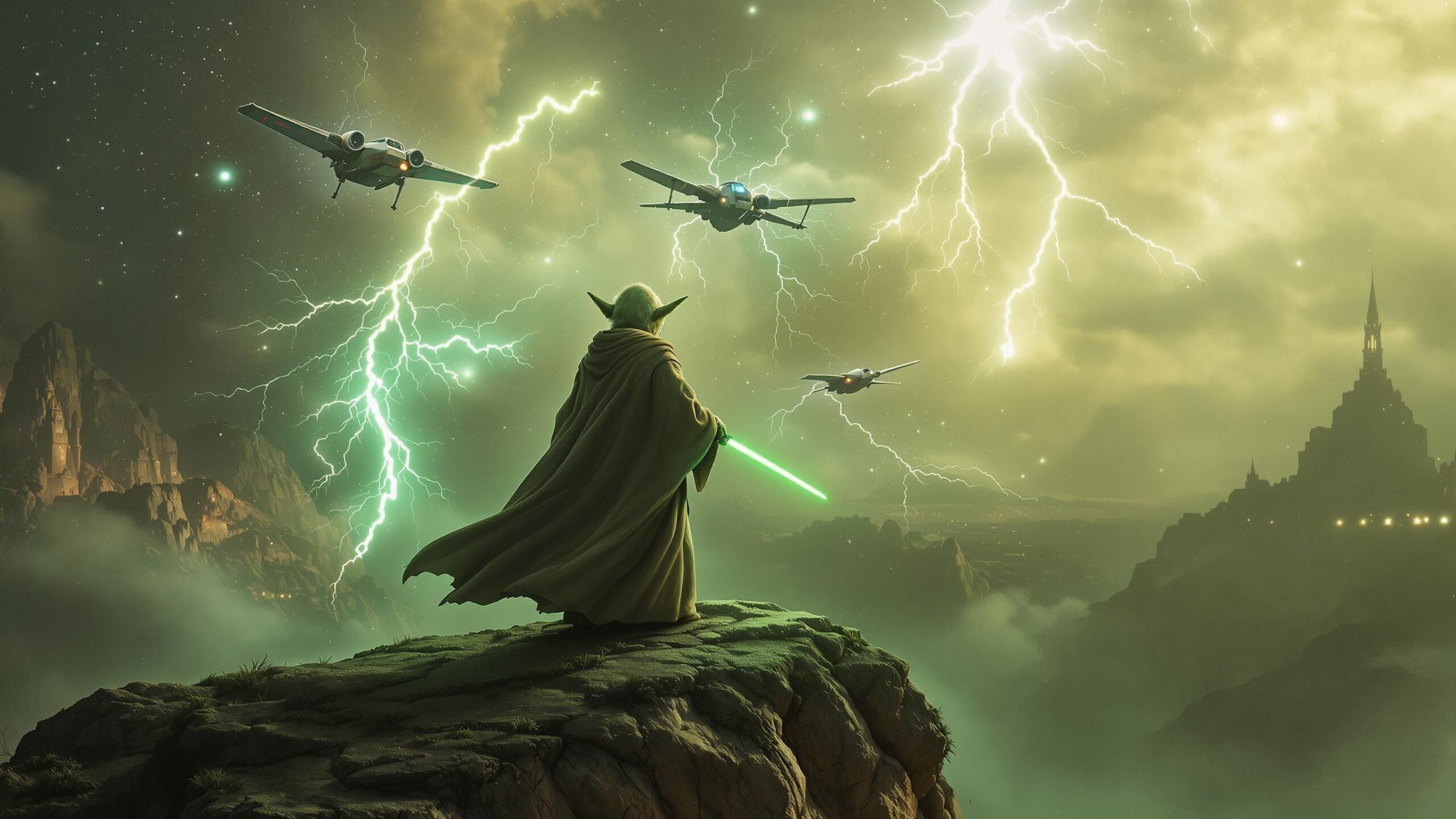From the deserts of Tatooine to the fiery surface of Mustafar, Obi-Wan Kenobi has proven time and again why he remains one of the most revered Jedi Masters in the Star Wars universe. He was not just a lightsaber duelist or a general in the Clone Wars—he was the embodiment of Jedi philosophy: calm, wise, and deeply devoted to peace, even in the darkest of times. His mastery wasn’t always in flashy displays of Force power; often, it was in the grace with which he bore tragedy, the cunning with which he countered deception, and the compassion he extended to both friend and foe. Whether it was guiding Anakin, confronting Sith Lords, or living in exile, Obi-Wan’s journey was laced with trials that revealed the depth of his strength and clarity of his soul. Let’s take a closer look at ten defining moments where Obi-Wan Kenobi truly earned the title of Jedi Master.
#10: Negotiating with the Neimoidians on Naboo
Obi-Wan Kenobi’s introduction in The Phantom Menace doesn’t find him in the midst of a dramatic battle or Force-powered display—but rather in the role of diplomat. Alongside his Master, Qui-Gon Jinn, Obi-Wan was sent to resolve a trade blockade imposed by the Neimoidians. While the mission quickly devolved into chaos, this early episode showcased Obi-Wan’s composure under pressure. Unlike Qui-Gon’s more rebellious nature, Obi-Wan followed the Jedi Code closely, showing early signs of a disciplined, measured mind. His handling of the negotiation (before it went awry) and his tactical response to being ambushed highlighted the balance he would continue to walk throughout his life. The young Jedi did not just swing his lightsaber—he waited, watched, and understood the art of restraint. This diplomatic mindset, layered with his emerging combat skill, revealed how Obi-Wan’s talents extended beyond brute strength, setting the foundation for his Jedi Mastery.
#9: Training Anakin Skywalker
Taking on Anakin as a Padawan was not Obi-Wan’s idea—it was Qui-Gon Jinn’s dying wish. Obi-Wan was still mourning his Master and likely doubted his own readiness to train the prophesied Chosen One. Despite his reservations, Obi-Wan accepted the challenge. The path ahead was fraught with tension, and Anakin was anything but an easy student. Yet Obi-Wan’s consistent effort to instill discipline, humility, and balance in Anakin—even when it clashed with the boy’s impulsiveness—shows incredible dedication. He wasn’t just a teacher; he was a mentor, brother, and father figure. Though Anakin eventually fell to the dark side, it was not for Obi-Wan’s lack of effort or wisdom. Their relationship, deeply complex and rooted in love and duty, is one of the emotional cores of the prequel trilogy. Obi-Wan’s perseverance in trying to save Anakin, even at the cost of his own heart, reflects the pain Jedi Masters sometimes endure—trying to guide others without being able to control their choices.
#8: Defeating Darth Maul
The duel on Naboo’s Theed Palace catwalks is a milestone not just for its choreography, but for what it symbolizes in Obi-Wan’s journey. After witnessing the death of Qui-Gon at Darth Maul’s hands, Obi-Wan taps into his grief but doesn’t lose control. His final attack against Maul—using his Master’s lightsaber and an acrobatic leap from a seemingly doomed position—is one of the most iconic moves in Star Wars. But it’s not just the somersault that matters—it’s what it represents: Obi-Wan’s ability to suppress rage and channel purpose. In that moment, he transitioned from Padawan to Jedi Knight, not merely through martial triumph, but by embodying the Jedi ideals of resilience and resolve. His victory was earned through strategy and composure, not aggression. He honored his Master, protected Naboo, and dealt the Sith their first major defeat in a millennium. It was a moment of ascension—Obi-Wan stepped into a larger role, not just in the Jedi Order, but in the saga of the galaxy.
#7: His leadership during the Clone Wars
While Anakin Skywalker stole many headlines during the Clone Wars, Obi-Wan Kenobi was a steadfast and brilliant military leader. As a general in the Republic Army, he led troops with a sense of duty but always maintained the Jedi’s moral compass. His campaigns on worlds like Christophis, Umbara, and especially the grueling siege of Mandalore, are legendary. He faced not only Separatist droids but complex moral choices, balancing warfare with compassion. Unlike some Jedi who became hardened by the conflict, Obi-Wan often voiced concern about what the war was turning them into. His strategic mind and calming presence often prevented unnecessary bloodshed. In The Clone Wars animated series, we see his compassion tested by the return of Darth Maul and the tragic fall of Duchess Satine Kryze, the woman he loved. Yet through it all, Obi-Wan never lost his center. He remained a beacon of what Jedi could be, even when surrounded by chaos and betrayal.
#6: Confronting General Grievous on Utapau
The mission to Utapau in Revenge of the Sith was not just a battle—it was a test of Obi-Wan’s tenacity, agility, and unwavering confidence in the Force. Tasked with eliminating General Grievous, the feared droid general responsible for the deaths of numerous Jedi, Obi-Wan approached the mission with surgical precision. From his stealth infiltration to his iconic leap from above with the line “Hello there,” Obi-Wan exuded the calm confidence of a seasoned master. The duel itself was ferocious, pitting his mastery of Form III lightsaber combat—designed to counter blaster fire—against a whirlwind of spinning sabers and metallic limbs. Obi-Wan didn’t try to overpower Grievous. He outlasted him, using patience, adaptability, and intelligence. Even when disarmed and dragged into a brutal hand-to-hand chase, Obi-Wan remained unshaken. His use of Grievous’ own weapon—a blaster—to end the fight with poetic irony (“So uncivilized”) highlights how he could use practicality without losing his Jedi ethics. This victory wasn’t just physical; it was symbolic of Obi-Wan’s ability to confront overwhelming odds with poise.
#5: Duel with Anakin on Mustafar
Few moments in Star Wars history carry the emotional weight of Obi-Wan’s confrontation with Anakin Skywalker, now transformed into Darth Vader. On Mustafar’s volcanic plains, the fiery backdrop mirrored the intensity of their relationship’s collapse. Obi-Wan didn’t want to fight Anakin—he loved him. But with the Jedi Order shattered and the Republic in ruins, Obi-Wan knew he had to act. The duel was both personal and apocalyptic, showcasing Obi-Wan’s superior experience and restraint. While Anakin was raw power and fury, Obi-Wan was controlled and precise. He knew his apprentice’s strengths and weaknesses, and ultimately, his decision not to kill Anakin outright—leaving him dismembered and burning—was one of heartbreak, not vengeance. “You were my brother, Anakin. I loved you,” he says, devastated. This wasn’t a triumphant moment—it was the cost of duty. It showed that sometimes, being a Jedi Master means making the most painful decisions to protect the greater good, even if it scars your soul.
#4: Living in exile to protect Luke Skywalker
After Order 66, Obi-Wan could have given up. Instead, he chose exile. Watching over Luke from afar on Tatooine, Obi-Wan’s life became one of quiet vigilance. He worked hard to remain unnoticed, to suppress his presence in the Force, and to keep the boy safe while navigating a planet filled with hostility. His choice to live as “Ben Kenobi,” a hermit, wasn’t cowardice—it was sacrifice. In the Obi-Wan Kenobi series, we see just how much this exile cost him. Haunted by past failures and the weight of Anakin’s fall, Obi-Wan wrestled with doubt and regret. Yet when Leia Organa was kidnapped, he didn’t hesitate to step into the light once more, risking exposure to save her. His bond with the Skywalker twins—protecting Luke from afar, guiding Leia through trauma—showed a Jedi Master not just defined by combat, but by compassion. Every day he spent in the dunes of Tatooine was a testament to his enduring commitment to the Jedi path, long after the Order itself was gone.
#3: Facing Darth Vader again on Mapuzo
The confrontation between Obi-Wan and Vader in the Obi-Wan Kenobi series on the mining world of Mapuzo was not about lightsabers or power—it was about trauma. When Obi-Wan first sees what Anakin has become, he is stunned into paralysis. The man he once called brother is now a monster clad in black armor, burning villages and killing innocents. Obi-Wan’s fear is palpable; he’s rusty, out of practice, and riddled with guilt. And Vader takes full advantage, dragging his former master through fire in a chilling act of revenge. But even in defeat, Obi-Wan’s will doesn’t break. He lives. He regroups. And most importantly, he begins to rediscover his identity. This encounter isn’t a loss—it’s a reminder that even Jedi Masters can falter, but what defines them is their ability to rise again. The emotional depth of this moment proves that Obi-Wan’s journey is not just about strength, but about resilience and self-forgiveness.
#2: His final duel with Vader aboard the Death Star
By the time Obi-Wan boards the Death Star in A New Hope, he is no longer the warrior of the Clone Wars. His body is aged, his movements slower, but his mind and spirit are at peace. When he confronts Darth Vader, the battle is subdued—not a whirlwind of flips and strikes, but a solemn confrontation between past and present. Obi-Wan knew he wouldn’t leave the Death Star alive. He was there to ensure Luke and the others could escape. In a moment of complete serenity, Obi-Wan chooses to become one with the Force, lowering his blade as Vader strikes him down. “If you strike me down, I shall become more powerful than you can possibly imagine.” This wasn’t a death—it was a transcendence. Obi-Wan demonstrated the ultimate Jedi lesson: that the Force is not bound by life or death. His sacrifice ensured the future of the Rebellion, and he remained a guide to Luke from beyond, just as Qui-Gon had once done for him.
#1: Teaching Luke Skywalker the ways of the Force
Though brief, Obi-Wan’s mentorship of Luke Skywalker in A New Hope was transformative. He didn’t just hand Luke a lightsaber—he offered him a purpose. In a galaxy ruled by fear, Obi-Wan offered hope. His teachings about the Force, the Jedi, and Luke’s father planted the seeds of rebellion, heroism, and legacy. Despite carrying immense personal grief, Obi-Wan spoke with calm authority. He didn’t manipulate Luke; he gave him choices, guiding rather than controlling. His stories shaped Luke’s destiny, even if they were selective with the truth. More importantly, Obi-Wan gave Luke the courage to believe in something greater than himself. And after death, Obi-Wan remained present—guiding Luke during the Death Star assault, and later as a voice of reason on Dagobah. This mentorship proved that being a Jedi Master isn’t about battle records—it’s about shaping the future. Obi-Wan’s most powerful contribution wasn’t a duel, but a spark—one that ignited the return of the Jedi.
Obi-Wan Kenobi’s legacy isn’t measured in victories, but in endurance, sacrifice, and wisdom. From training Anakin to protecting Luke, from dueling Sith Lords to confronting his own fears, Obi-Wan remained a true Jedi through the galaxy’s darkest hours. His story is a masterclass in compassion, duty, and redemption. He was the quiet strength behind the rebellion, the humble guardian of a legacy, and the embodiment of what it truly means to be a Jedi Master.




